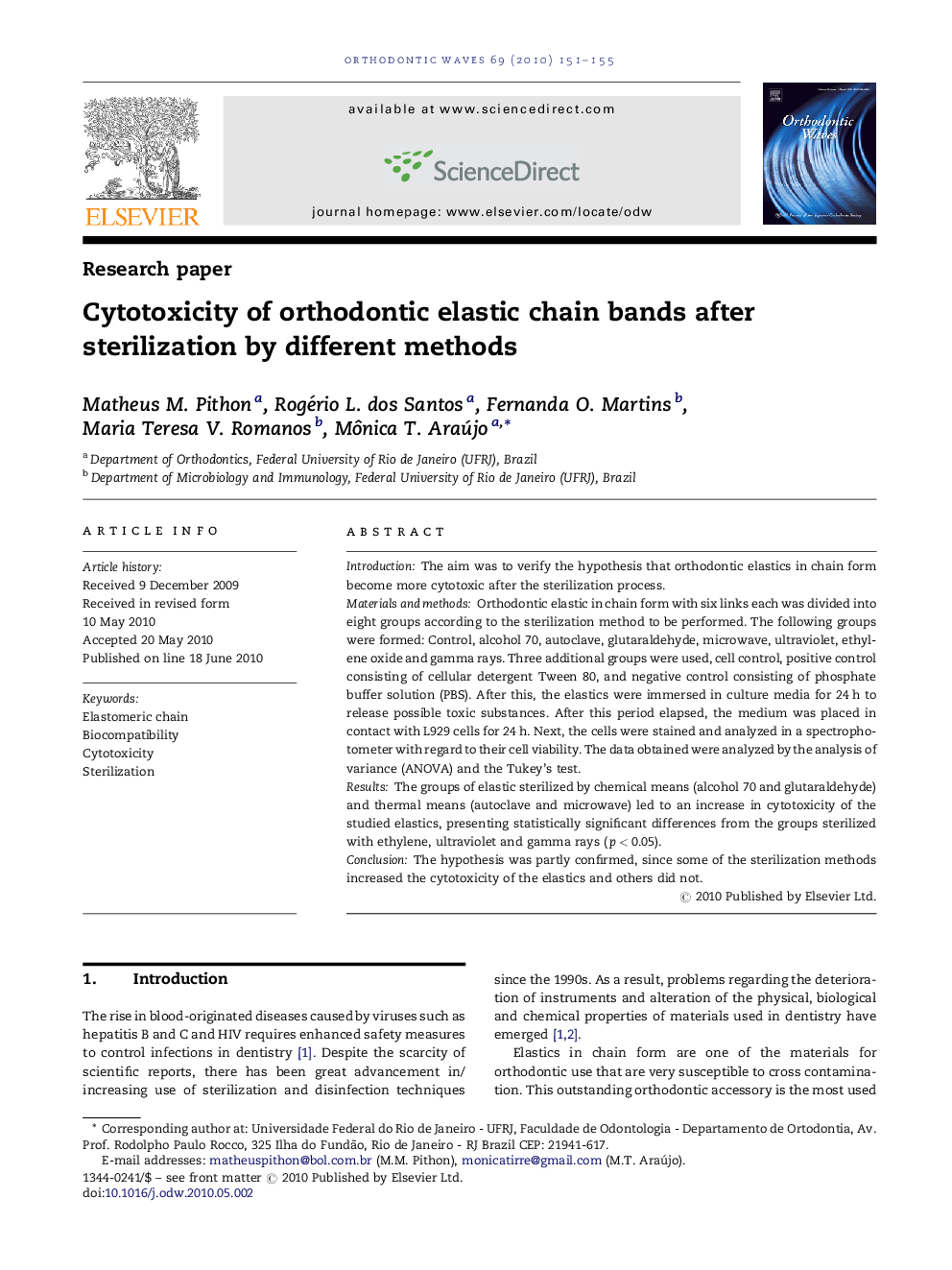| Article ID | Journal | Published Year | Pages | File Type |
|---|---|---|---|---|
| 3170554 | Orthodontic Waves | 2010 | 5 Pages |
IntroductionThe aim was to verify the hypothesis that orthodontic elastics in chain form become more cytotoxic after the sterilization process.Materials and methodsOrthodontic elastic in chain form with six links each was divided into eight groups according to the sterilization method to be performed. The following groups were formed: Control, alcohol 70, autoclave, glutaraldehyde, microwave, ultraviolet, ethylene oxide and gamma rays. Three additional groups were used, cell control, positive control consisting of cellular detergent Tween 80, and negative control consisting of phosphate buffer solution (PBS). After this, the elastics were immersed in culture media for 24 h to release possible toxic substances. After this period elapsed, the medium was placed in contact with L929 cells for 24 h. Next, the cells were stained and analyzed in a spectrophotometer with regard to their cell viability. The data obtained were analyzed by the analysis of variance (ANOVA) and the Tukey's test.ResultsThe groups of elastic sterilized by chemical means (alcohol 70 and glutaraldehyde) and thermal means (autoclave and microwave) led to an increase in cytotoxicity of the studied elastics, presenting statistically significant differences from the groups sterilized with ethylene, ultraviolet and gamma rays (p < 0.05).ConclusionThe hypothesis was partly confirmed, since some of the sterilization methods increased the cytotoxicity of the elastics and others did not.
